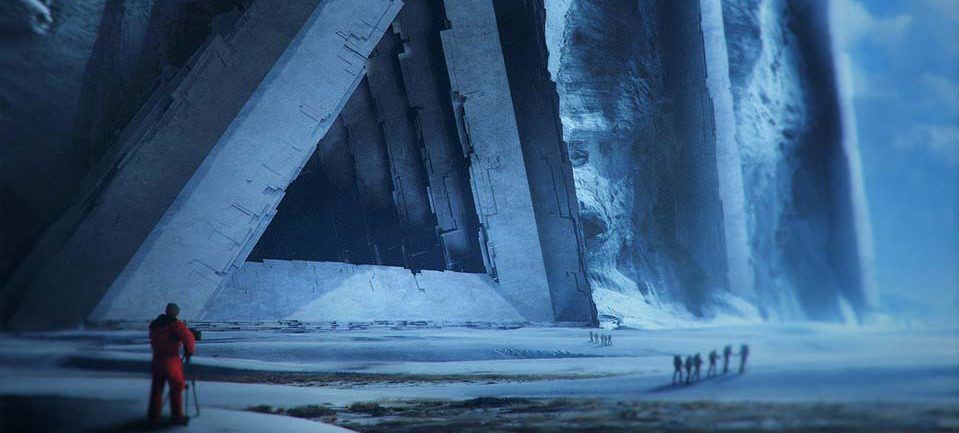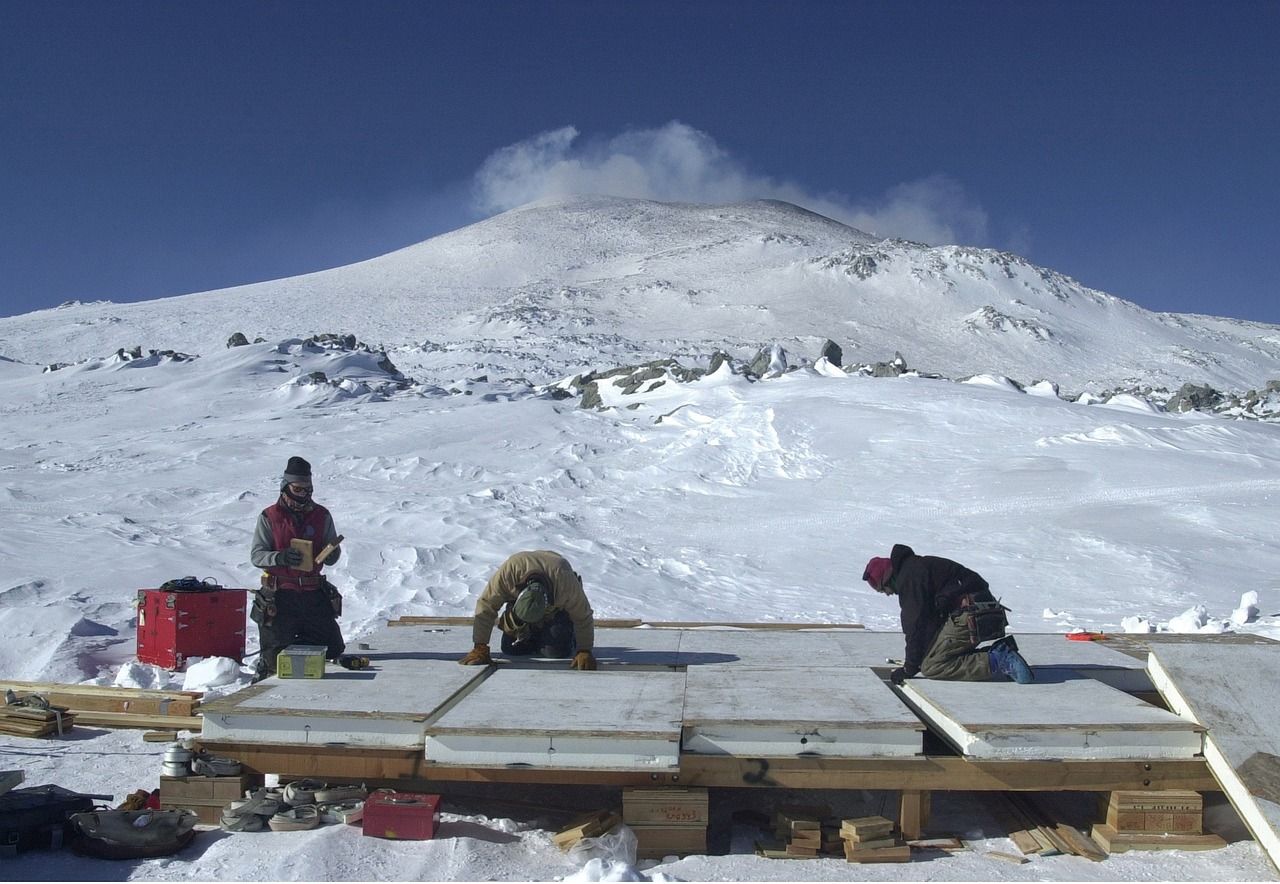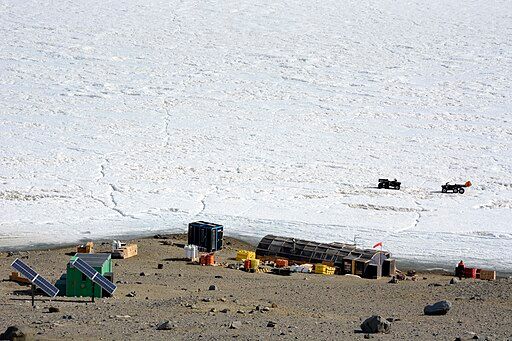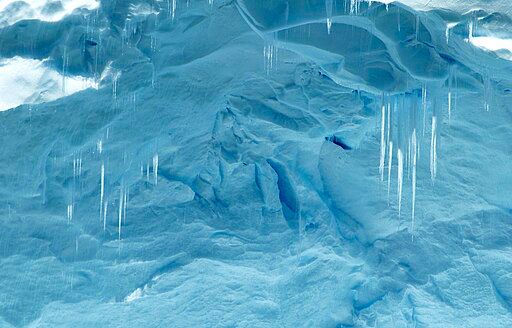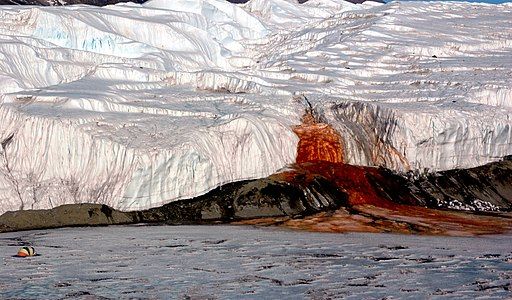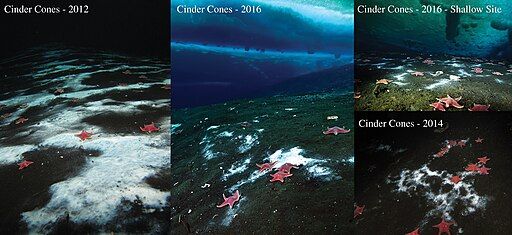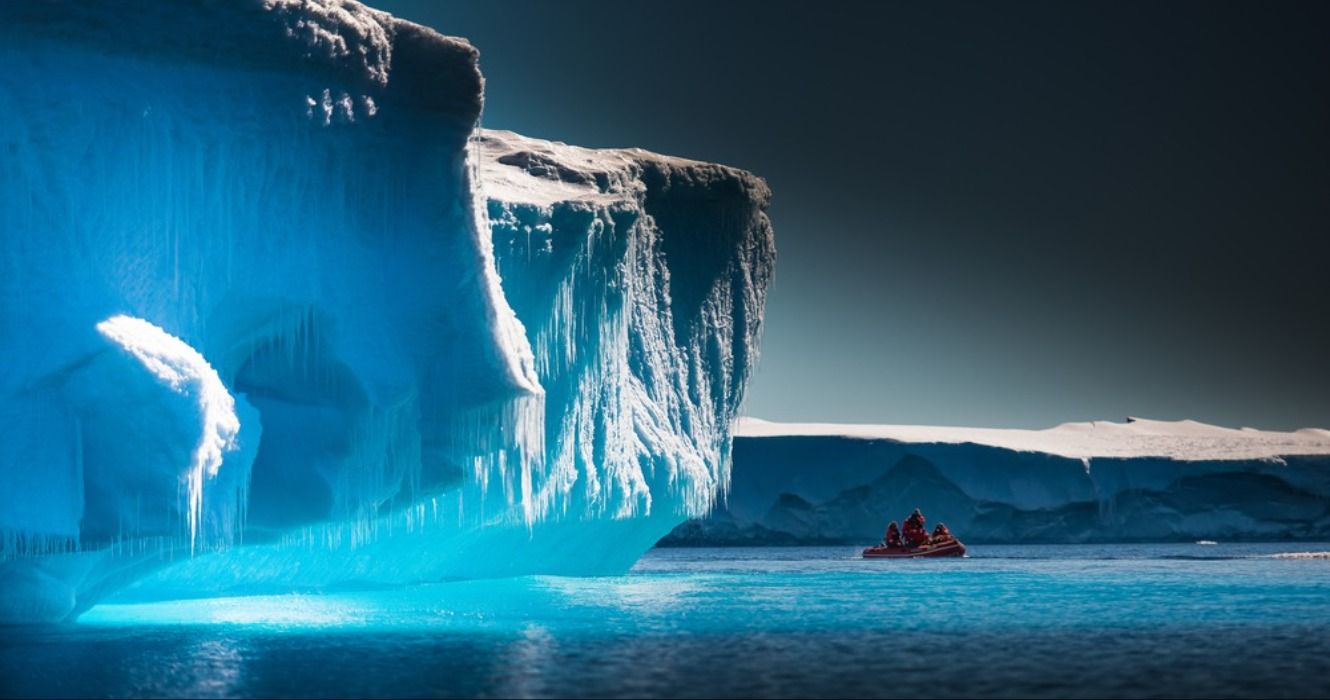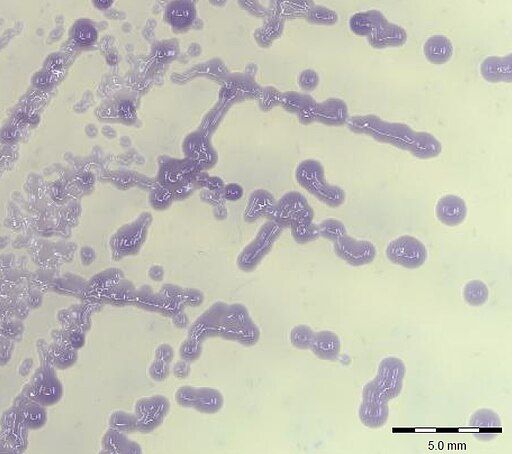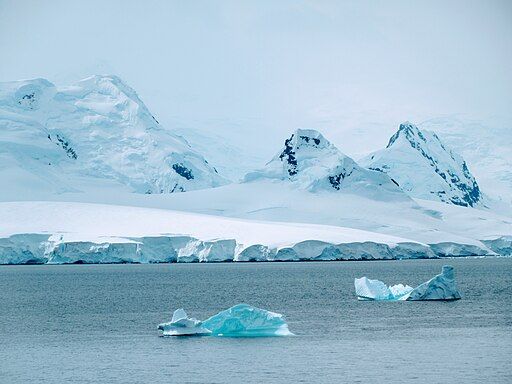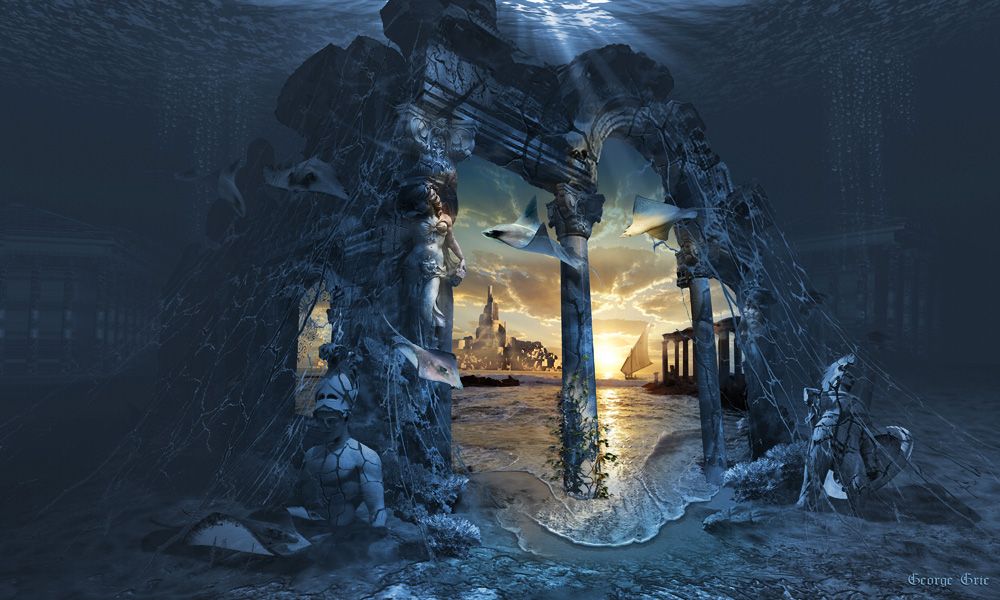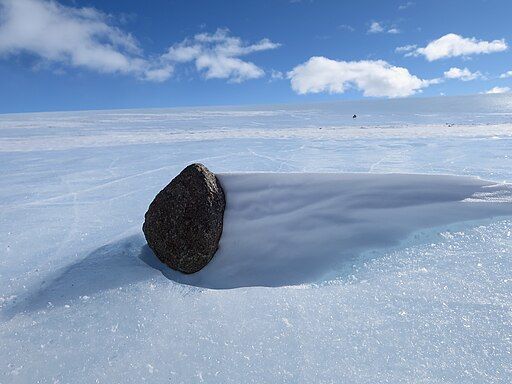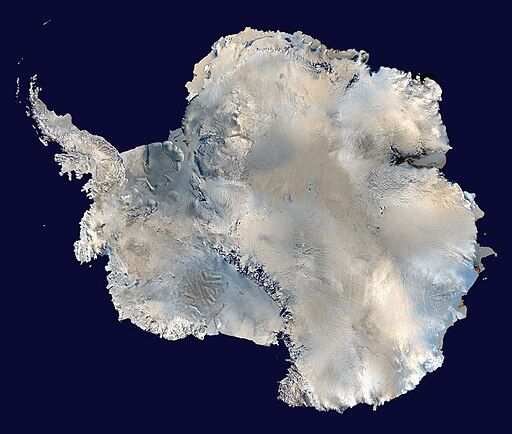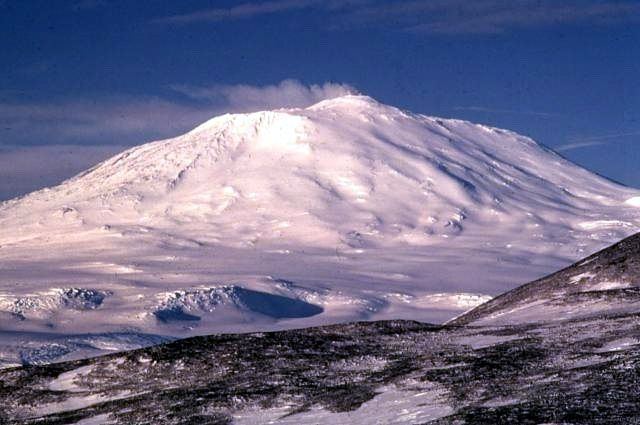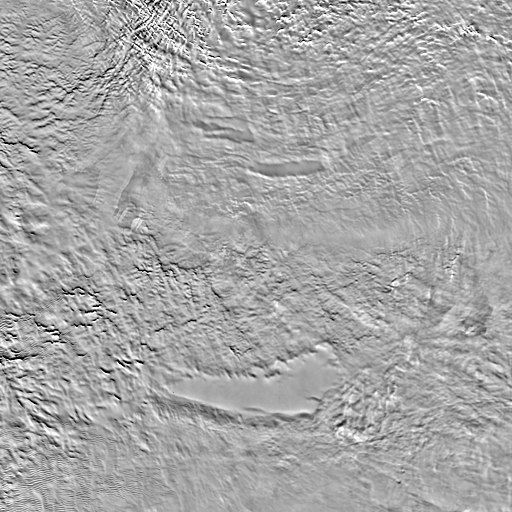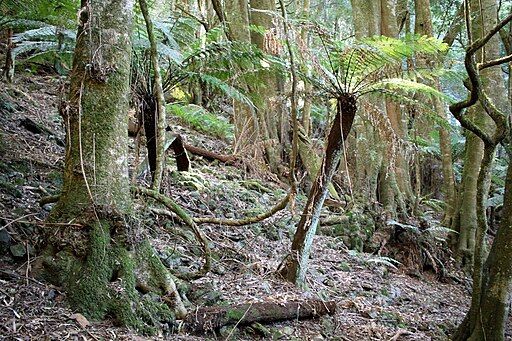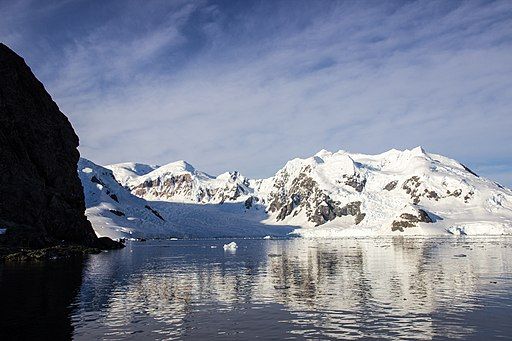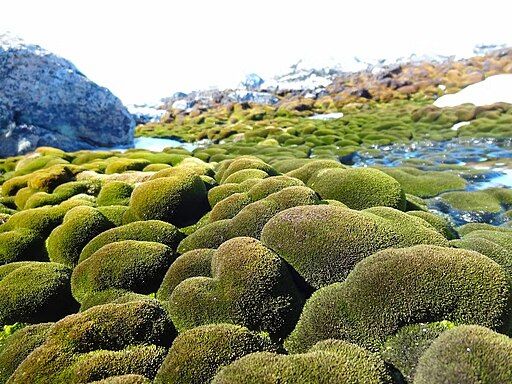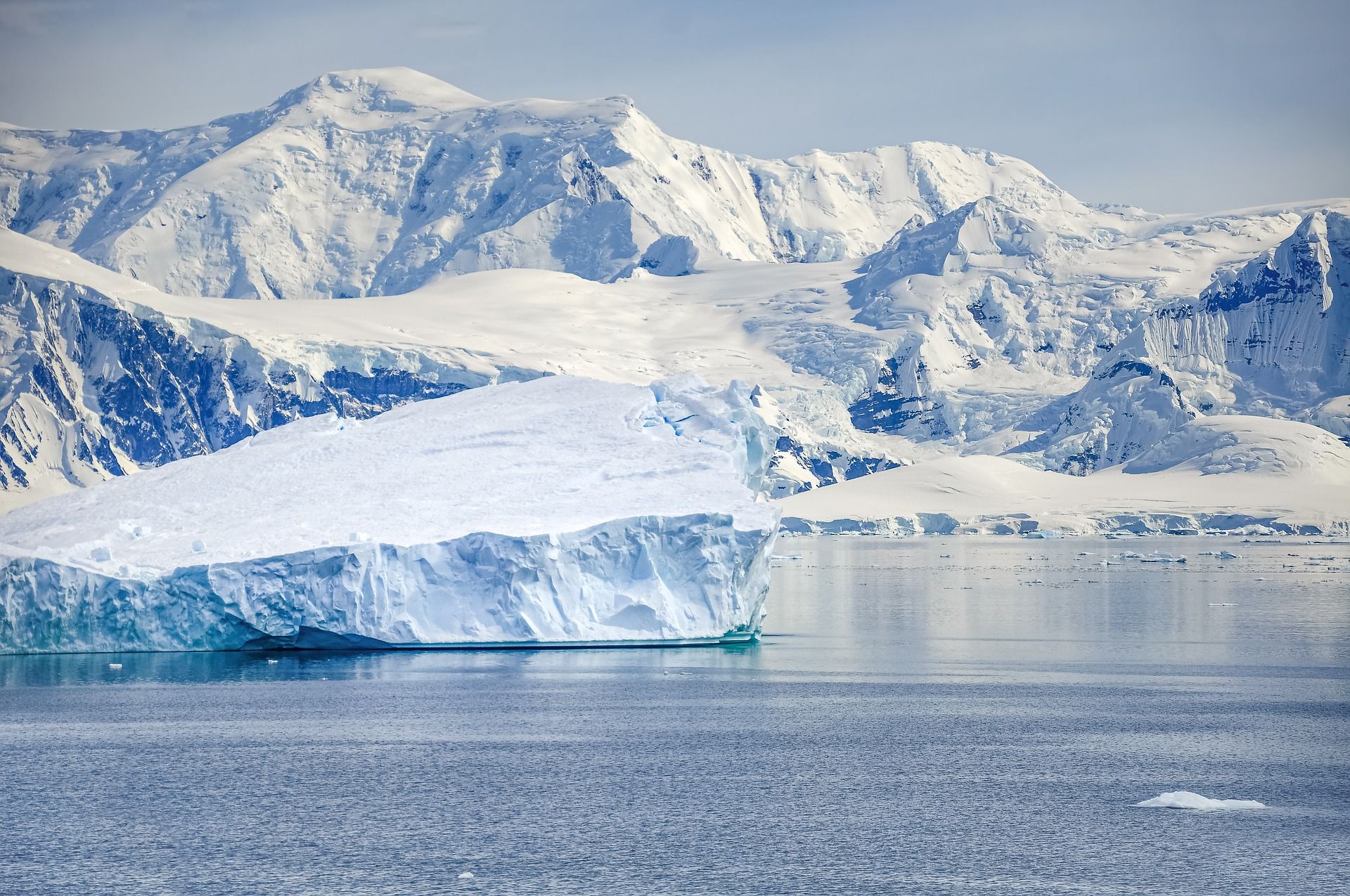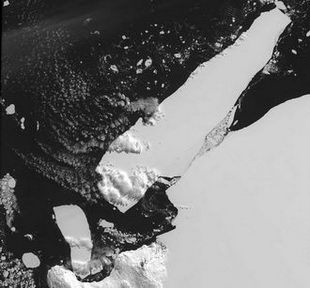Read update
- More Bizarre Things Hidden Right Underneath The Antarctic And Above Ground
Summary
- Antarctica is home to hidden secrets, including an enormous underground river and a hidden ecosystem 1,600 feet below the Larsen Ice Shelf.
- The continent also contains hundreds of mountain lakes and a flow of red liquid known as Blood Falls.
- While conspiracy theorists speculate about Nazi bases and the Lost City of Atlantis, Antarctica is a place of scientific discovery, with ancient rainforests and the world's loneliest ATM.
The Antarctic, a mysterious frozen continent, about 1.5 times the size of the United States, 99 percent of which is covered by ice. It contains about 70 percent of the planet's freshwater and 90 percent of the Earth's ice. Being the least populated continent, it keeps a lot of secrets. Of course the more we explore and analyze Antarctica the less it seems mysterious to us. We already know why water in the 'blood falls' is red and that there are mountains and hundreds of lakes underneath thick layers of ice.
However, because of the remoteness and extreme weather conditions, Antarctica wasn't properly studied by scientists, and it remains shrouded in icy mysteries. Conspiracy theorists have developed many theories trying to find out what secrets the ancient glaciers keep. Nazi base, UFO base, the Lost City of Atlantis, and the most ancient pyramid in the world are just some of the things which conspiracy theorists think can be situated in the Antarctic.
While Antarctica is a fascination for scientists, there are many fascinating things for tourists to do in the summer. So, to pique travelers' interest, here are some of the most Antarctica secrets and things to know before going on a memorable vacation.
UPDATE: 2023/09/04 11:50 EST BY REENA JAIN
More Bizarre Things Hidden Right Underneath The Antarctic And Above Ground
With so many strange things beneath and above the ground, Antarctica fascinates everyone. This list has been updated with two more secrets of Antarctica as well as all new pictures and updated links to quench readers' curiosity.
22 Underneath: Enormous River
Researchers found that there is an enormous underground river flowing underneath four distinct ice sheets in Antarctica. According to their research, this underground river could probably be larger than the Thames in England (nearly 300 miles long). It flows melting ice from an area larger than the combined size of France and Germany into the Weddell Sea. After this finding, researchers now believe that a vast network of underground rivers runs across Antarctica.
21 Underneath: A Hidden Ecosystem
Researchers discovered a hidden ecosystem more than 1,600 feet below the Larsen Ice Shelf while exploring the underground river. While researching on the river, the crew excavated roughly 1,640 feet into the ice's surface and sent a camera down through the frigid tunnel. The camera captured swarms of tiny, shrimp-like amphipods swimming inside a gloomy tunnel. The team was taken aback by this since they had not anticipated discovering any kind of life so deep beneath the frozen surface.
20 Underneath: Mountain Lakes
There are many things hidden under the thick layers of ice in Antarctica and some of them are already discovered. One such discovery is the underground lakes. Scientists first find the lakes in 1970 with help of echo sounding which is very similar to using radars to locate aircraft in the sky. The estimated amount of lakes under the 3 kilometers of ice is 400, but this estimation is approximate and scientists suggest that there could be twice as many lakes there because there are many regions that weren't examined.
Most likely these lakes were formed after the separation of Antarctica from Gondwanaland, which was a supercontinent many years ago.
19 Above the Ground: Blood Falls
This flow of red liquid in the middle of snow kingdom has been confusing scientists since the beginning of the past century. In 1911 an Australian geologist first discovered the 'blood waterfall' and the quest to solve this riddle began. Scientists understood very quickly that the water was red due to the high iron content, but it would be years later before they could prove this theory.
It turned out that there was an underground lake not far from the falls with water full of oxidized iron, which gave the water this color. Puzzle solved.
18 Underneath: Methane
Have you ever heard about Abraham lake in Canada full of mesmerizing ice bubbles? If yes, have you ever wondered what these bubbles are? It's frozen methane which comes from microbes digesting organic matter in water. Methane is a greenhouse gas worse than carbon dioxide and although it looks beautiful when frozen, it poses a serious threat to mankind's well-being.
Right now huge amounts of methane are frozen and hidden in the ice of Antarctica, but if glaciers continue to recede it may lead to the explosion of a 'methane bomb' which we'd better avoid. After all, it's all in our hands.
17 Above the Ground: Giant Hole
A hole larger than the Netherlands, or the size of Maine has opened in Antarctica in 2017. These holes aren't something new to Antarctica, and they are known as polynyas. However, this hole or polynyas is the biggest one since the 1970s, makng it one of the most interesting things found in Antarctica.
According to National Geographic, this phenomenon happens when warm water is pushed toward the surface with ocean currents which makes the ice layer on the top melt. When the Antarctic atmosphere comes in contact with the surface water, it sinks and cools, then heats up again and rises back towards the surface.
16 Underneath: Dangerous Bacteria
Scientists have found microbes underneath the ice of Antarctica and bacteria hiding right in the ice. Researchers aren't sure if it is a functional ecosystem or just disorganized hubs of life, but what they know is that the bacteria found in ice samples are old and date back to 420,000 years old.
Scientists also aren't sure if ice acts as a preservative that makes the microbes intact until the ice melts, or active microbial communities are living inside the ice. Another question that pops into mind is if these bacteria are dangerous. The potential of that is rather high. Maybe by not being able to deal with global warming, we're slowly opening Pandora's Box?
15 Above the Ground: The Pyramid
Do you remember the loud news titles saying that 'Pyramid found in the Antarctic could change the history of humanity' from a couple of years ago? Well, let's take a closer look at this issue. There's really a formation in the Antarctic that looks like a pyramid, and it's even been nicknamed 'a Pyramid'. But it's only a mountain that looks like a pyramid. And it wasn't discovered by Google Maps as some articles say. It was first encountered during a 1910-1913 expedition in Antarctica, and it was kept secret from the average man. After a hundred years people found out about it and started to create conspiracy theories around it.
“ By definition, it is a nunatak, which is simply a peak of rock sticking out above a glacier or an ice sheet. This one has the shape of a pyramid, but that doesn’t make it a human construction,” says Mitch Darcy, a geologist at the German Research Centre for Geosciences in Potsdam.
Look at Mount Bulandstindur in Iceland or Matterhorn in the Alps. They also look like pyramids, while being mountains. The fact is that pyramidal-peaked mountains are a phenomenon that you can often see in glaciated areas and 'Pyramid' found in Antarctica is one of them.
14 Underneath: Hidden City
We already know that there are hundreds of lakes hidden underneath the thick ice of Antarctica, but what if there's something more? Can you think of a city under ice of Antarctica?
There are people who suggest that the frozen continent is home to the Lost City of Atlantis. If we take into consideration that a long, long time ago Antarctica was as warm as Los Angeles is now, and it was a very appropriate place to build a city it would be quite logical to suggest that this area was inhabited. The society that could have existed there came to an end with the last Ice Age which completely froze the continent.
So, it's quite possible that some kind of society lived in Antarctica before the Ice Age, but whether it's the Lost City of Atlantis or some other civilization, we can't really tell for sure.
13 Above the Ground: Mysterious Meteorite
Not so long ago, a team from Japan and Belgium discovered a hefty meteorite from Mars in the Eastern Antarctic.
"This is the biggest meteorite found in East Antarctica for 25 years," Vinciane Debaille, a geologist from Université Libre de Bruxelles in Belgium said. "This is something very exceptional. When you find such a meteorite on Earth, it means that when it was in the sky, it was much larger."
Just imagine, the expedition has spent 40 days collecting 75 kilograms of the meteorite! In fact, there are a lot of scientists and adventurers who travel to Antarctica in search of meteorites.
12 Underneath: Oil
Did you know that there's oil in Antarctica? But it's too dangerous to extract it, and we'd better leave it where it is. The Madrid Protocol signed in 1991 in the capital of Spain regulates the environmental protection of Antarctica and bans all commercial mining until 2048.
Today, there are no plans for commercial mining in Antarctica and no known plans to reverse the collective decision for Antarctica's environmental protection.
In fact, the weather, quantity of ice and distance from industrialized areas make the extraction of oil very expensive and dangerous. So let's hope that international agreements won't be broken because of someone's greed or ignorance.
11 Above the Ground: Mount Erebus
Despite the harsh weather conditions, Mount Erebus is the southernmost active volcano in the world with liquid magma and lava boiling for eons. To be more precise Mount Erebus has been active for about 1.3 million years. It's also Antarctica's second-highest volcano with an elevation of 3,794 meters above sea level.
Ross Island, where Mount Erebus is situated is also home to the following inactive volcanoes: Mount Terra Nova, Mount Terror, and Mount Bird. There are also currently two lava lakes at Mount Erebus.
10 Underneath: Nazi Base
There are theories that Germans built a station in Antarctica to fly to the moon and that Hitler didn't commit suicide and fleeted to Antarctica instead. While these rumors are false, Germans were really exploring Antarctica and built a hidden base 960km from the North Pole.
Knowing Hitler's passion for mysteries (Nazis did an expedition to India and Tibet to find the powerful artifact called the Spear of Destiny which would grant Hitler victory in war) it's no wonder that he searched for something in Antarctica. Nazis' base in Antarctica didn't exist long and was abandoned 70 years ago after its crew was poisoned by the meat of the polar bear.
9 Above the Ground: Deep Lake
Deep Lake in East Antarctica is one of the most remarkable ecosystems on Earth. Its waters can rival the Dead Sea in terms of saltiness and its saltiness also makes the water liquid despite freezing temperatures. It's a very dangerous environment for most of the sentient beings living there. For instance, it's dangerous for penguins to swim in this lake because the water is much colder than in the ocean. No one, except for the cold-loving microbes can live in such a harsh environment.
8 Underneath: Ancient Rainforests
Are you surprised to see this one on the list? Of course, you shouldn't expect a secret oasis in Antarctica where green rainforests grow. But leaf impressions and fossilized wood clearly show that there were rainforests in Antarctica. There were also signs of tropical trees and that once again leads us to a quite trustworthy scientific theory that states that before the Ice Age, Antarctica was a warm region where ancient civilizations lived.
It is very interesting to ponder what future research of the frozen continent will uncover because these things found frozen in Antarctica's thick layers of ice surely have a lot of stories to tell, and we're just starting to unearth them.
7 Above the Ground: Paradise Bay
There's nothing mysterious about Paradise Bay, but because it's one of the few flawless expressions of Antarctic beauty it should definitely be included in the list. All the things that you have seen on the postcards from Antarctica are present there. Giant icebergs, mammoth glaciers standing on a steel-blue sea, and playful penguins doing their routine stuff which look so entertaining to us.
It's also the perfect place to set foot on the icy land if you just want to experience the beauty of Antarctica without any extremes.
6 Underneath: Plants
It's difficult to imagine plants growing in this frosty kingdom, but scientists were able to find some. Just like everything on this continent they're far from being ordinary. 300 species of lichens and 100 species of moss that can endure cold were found in Antarctica. Most of them exist on the western side of the continent which is warmer, but certain species can also be found in colder regions of the continent.
Tussock grass can be found on islands around the continent, the lichen grows in cracks between rocks where they can access water and green and red snow algae can be found on the underside of floating ice and in the snow.
5 Above the Ground: The Oldest Worm in the World
According to National Geographic, the fifty-million-year-old sperm cells on the ancient worm's egg case were found in Antarctica. The egg case belongs to the class Clitellata worm, species of which are long extinct which makes it quite an extraordinary finding.
Studying this finding the scientists were able to figure out evolutionary relationships between different worm species, and they're hoping to find more ancient specimens during the next expeditions.
“A world of new information about the past is waiting to be revealed by further studies of the kind conducted here," says Michael Archer, a paleontologist at the University of New South Wales in Australia.
4 Underneath: Gamburtsev Mountain Range
A team of scientists was traveling across Antarctica when they suddenly stumbled upon a sizable mountain range underneath the ice. Known as the Gamburtsev Mountains, they measure 1,200 kilometers across and are roughly 3,000 meters tall. These mountains are about a billion years old, and just one incredible thing that many people didn't know about. What's more, the march of geological time should have already wiped out the Gamburtsevs a long time ago, but here they stand.
Scientists have their theories in regard to how they were able to stand so long, but they still don't know it for sure.
3 Above the Ground: B-15
B-15 is the world's largest recorded iceberg. It's 37 kilometers wide, and 295 kilometers long and its surface is larger than the territory of Jamaica island. It was calved from the Ross Ice Shelf of Antarctica in March 2000, and it broke into smaller pieces soon after it.
Scientists believe that this iceberg broke away not due to global warming, but because of the natural long-term cycle which occurs every 50-100 years. It's interesting that scientists tracked the route of B-15 carefully, for more than 6 years until it eventually broke into many lesser pieces. Some of them are still flowing in the waters of Earth.

